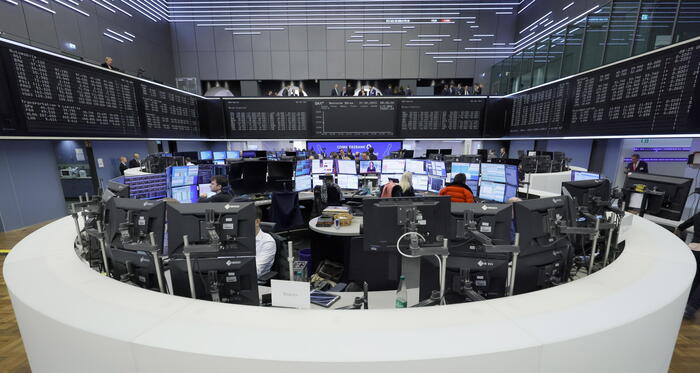The rate that the curve of new infections has taken - which reaches 904 cases per 100,000 inhabitants in the last 14 days - but especially that of hospital admissions and entry to their ICU, already at 130% of its structural capacity with 612 critics, has been able to with the resistance of the Madrid government to adopt restrictions at the level of which the other communities have been implementing for weeks.
He took them this Friday afternoon and they will take effect on Monday.
The community presided over by Isabel Díaz Ayuso (PP) is no longer the only one with a curfew more delayed than the state of alarm allows.
As in the rest of Spain, it will start at 22.00 (until now it was at 23.00).
This implies closing the hotel and other non-essential establishments at 9:00 p.m., reducing one hour.
If the president had warned on Wednesday that they would not count on her to sink the hospitality industry, her defense of the sector is now left to let her open until 9:00 p.m., with groups of four people at most at the tables, both inside and outside. outside, whether or not they live together.
Meanwhile, only those who live in them can be in the houses.
Visitors cannot be received.
"We must prepare for a scenario in which the measures we take are not going to be enough," said the Community Health Minister, Enrique Ruiz Escudero.
In addition, the Community will continue with its confinements by health areas, which will already affect 56 of these areas and 25 localities, where 1.6 million people from Madrid live, 24% of the population, and where the disease is taking place. 30% of infections.
Coronavirus in Spain: these are the new restrictions by autonomous communities
As in Madrid, the expansion of the pandemic in Spain does not give respite.
Another 42,885 diagnoses were reported yesterday, the second highest number in a day of the entire pandemic after the 44,357 on Thursday.
In total there are 2,499,560 notified, almost a quarter of a million (247,396) in seven days;
Of these, 14% has occurred in Madrid, 34,983. All indicators reflect the deterioration of the situation in that and in the rest of the regions.
In the rate of cases per 100,000 inhabitants in 14 days, Madrid has not grown as much as the rest, it has multiplied by 1.7 in the last two weeks —from 507 to 904—;
While the national average, which passed 800 yesterday, was 350 two weeks ago, that is, it has multiplied by 2.4.
In the deceased, the region governed by Díaz Ayuso is the third that registers the most in the last seven days, with 120. For the entire territory, there are 2,127.
Two weeks ago it was half.
The Deputy Minister of Public Health of the Community of Madrid, Antonio Zapatero;
the Minister of Health, Enrique Ruiz Escudero, and the General Director of Public Health, Elena Andradas, at the press conference this Friday (PHOTO: EUROPA PRESS | VIDEO: ATLAS)
Admissions, both in hospitals and in ICUs, continue to rise: the centers already have 21.63% of the beds occupied by covid.
15 days ago they were 11.93%.
In critical units it reaches 37.61%.
Two Fridays ago it was 24.05%.
There are 3,908 seriously ill people.
Although it is difficult to do a review by autonomies since not all give their percentages of occupation in the same way;
This official figure, for the most part, also includes the possible extensions that can be made, such as operating rooms or resuscitation units after anesthesia.
In Madrid, for example, capacity is measured on growth capacity, not on structural positions.
The incidence
There is no community that is free from worsening, also in incidence.
In two weeks, the general has gone from 350 to 828, a rise of 135%.
In comparison, Madrid's increase in the same period, of 78%, seems small, but the community already far exceeded the national average.
Although it does not reach the 354% that Murcia has grown, the 305% of Andalusia or the 273% of Castilla y León.
The best stops have come out of this epidemiological tsunami have been the Balearic Islands (26% increase), the Canary Islands (42%) and Cantabria (53%).
This situation has led the ministries, given the failure of most of them in their attempt to get the Government to rethink the state of alarm and allow to advance the time of the curfew before 10 p.m. or to decree strict house confinements, to approach de facto to situations with great restriction of mobility and assembly.
The groups are already of a maximum of four people in practically all of Spain, although in Lanzarote that maximum is two.
And Murcia, the Valencian Community, La Rioja and the big cities of Galicia and the island of Mallorca already have forbidden the meetings of non-cohabitants.
Madrid still has room to restrict.
In Navarra, Cantabria, Castilla y León, Galicia and Asturias, among others, the interior of the hotel and catering establishments is closed.
A prohibition that in Murcia and the Valencian Community also affects terraces.
Extremadura has also closed all non-essential establishments in towns with more than 3,000 inhabitants.
And the perimeter closures affect Bilbao, the cities of Aragon, Castilla y León and almost 400 municipalities in Andalusia, among others.
Manuel Franco, professor of Public Health at the universities of Alcalá and Johns Hopkins, is very critical of the delay that Madrid has had in tightening its measures.
“The community's dizziness in front of the central government clearly goes against the protection of our health, which is the ultimate goal of public health.
The long-term economic and social consequences are dire, ”he says.
A complicated situation
"It is a complicated situation because at the hospital level we are reaching levels similar to the first wave, the important difference is that we have vaccines, so first of all we should increase the vaccination rate to the maximum and consider, if the situation continues thus, take stricter confinement measures ”, says Jordi Vila, president of the Spanish Society for Infectious Diseases and Clinical Microbiology (Seimc).
All these measures have a goal that has been repeated for 11 months: to bend the curve.
The plateau in growth referred to on Thursday by the director of the Coordination Center for Health Alerts and Emergencies (CCAES), Fernando Simón, is not yet seen.
But the nurse specialist in health administration Guadalupe Fontán, does not wait for her until the end of next week.
You only see one solution: further limit mobility and meetings.
"We have a very strong third wave due to the circulation of the new variants of covid since more restrictive measures have not been taken previously and we have preferred to have Christmas to have greater prevention," says the epidemiologist from the European University of Valencia Patricia Guillem .
“There is a disparity of actions taken by each one of the regions to try to control the incidence.
We will have to wait between 12 and 14 days to assess whether they have been effective and in parallel try to advance the vaccination as much as possible ", says José Martínez Olmos, former general director of health and professor at the Andalusian School of Public Health, who states that" It looks like we're going to reach 900 [cases per 100,000 inhabitants] in three or four days. "
British variant muddies projections
From now on, no predictions can be made about the behavior of the coronavirus without taking into account the irruption of the British variant.
The European Center for Disease Control warns that in the coming months its presence will be the majority.
According to the Deputy Minister of Health of Madrid, Antonio Zapatero, "the transmission of this variant is in an average in the community of 9%, although by areas it can go from 7% to be above 33%".
This Friday, the British Government affirmed that the mutation is not only more infectious, but it is also 30% more lethal.
The estimate of the Madrid deputy councilor is that, "if it is observed in the surrounding countries that it doubles and even triples every week, in two or three weeks this will be the majority [in Madrid]".
Faced with this scenario, both the counselor, Enrique Ruiz Escudero, and Zapatero asked "no self-confinement, but responsibility, maintain a safe distance and have as few contacts as possible."
"We are not in Madrid or Spain to carry out actions that are not essential," said the counselor.
Neither professionals from the health system nor experts in epidemiology and public health see much room for maneuver for the next two weeks, the period of time in which the infections of the last days will take time to be reflected in admissions and entries into the ICU and, somewhat later, in deaths.
The epidemiologist Fernando García, from the Madrid Public Health Association, stated on Thursday that it was practically inevitable to "tighten the measures."
Information about the coronavirus
- Here you can follow the last hour on the evolution of the pandemic
- Restrictions search engine: What can I do in my municipality?
- This is how the coronavirus curve evolves in the world
- Download the tracking application for Spain
- Guide to action against the disease

/cloudfront-eu-central-1.images.arcpublishing.com/prisa/UHEDU3YW5IJ6ZS2OYJH4MIZ7XA.jpg)






